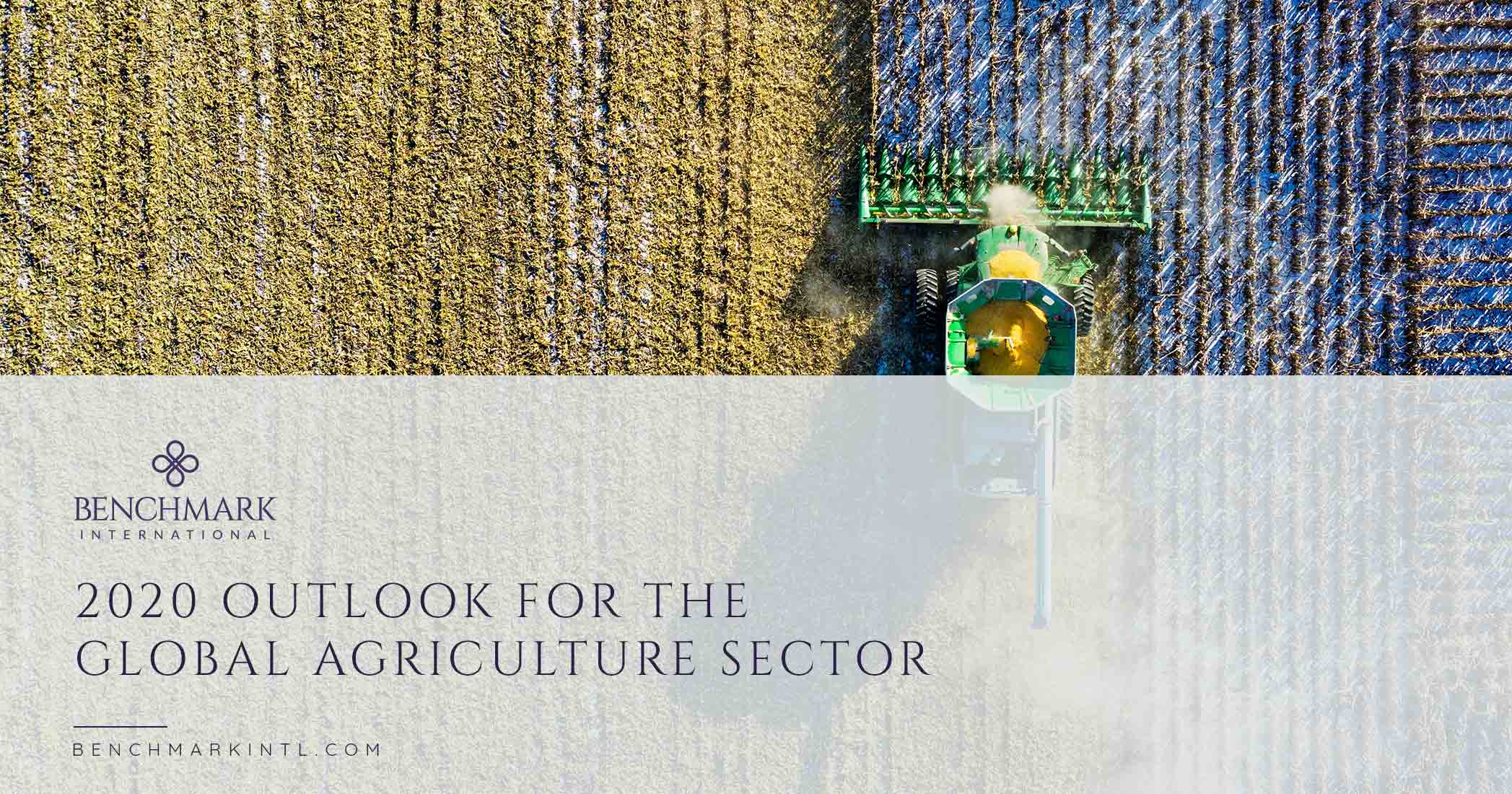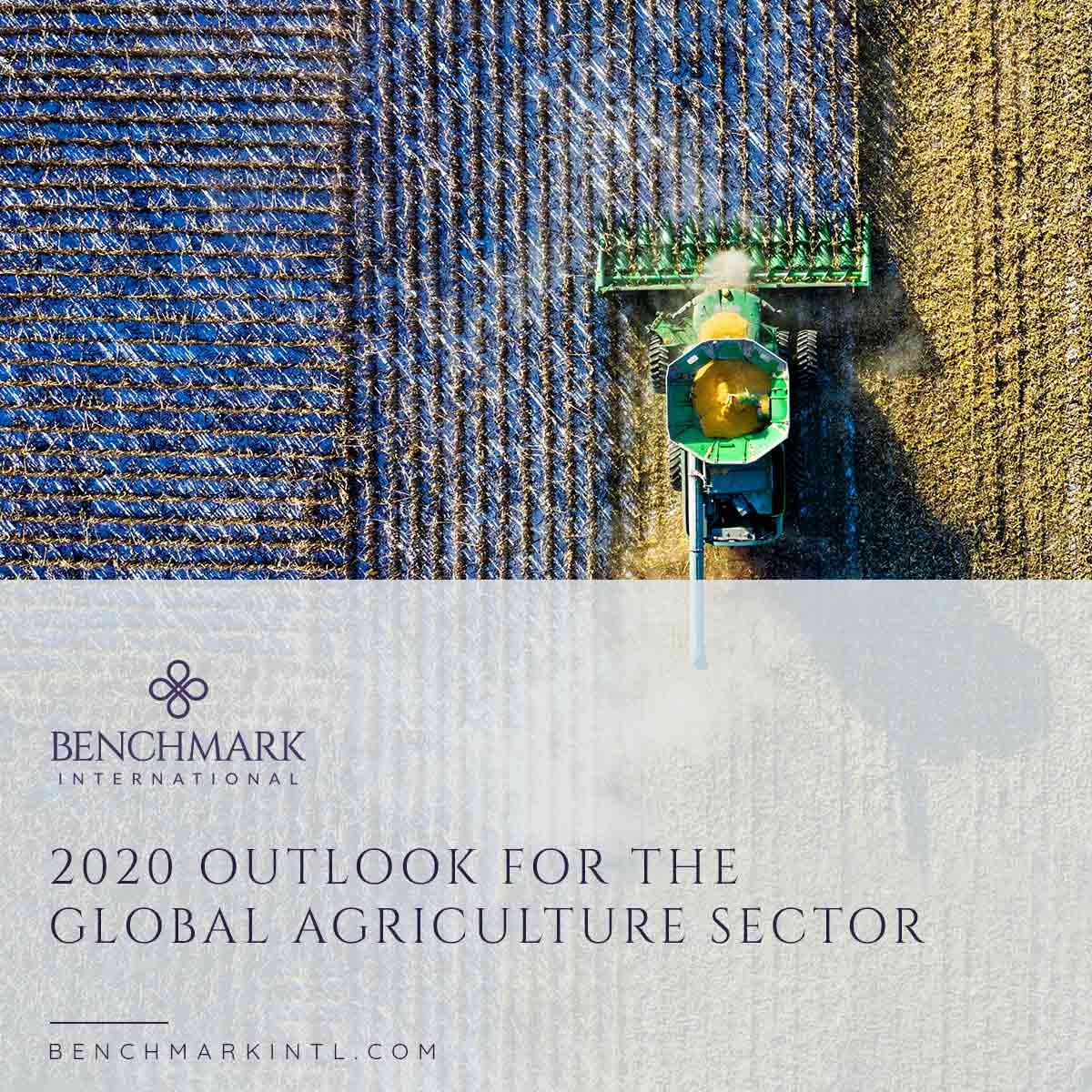
Geopolitical Factors
Mergers and acquisitions activity in the agriculture sector was bustling with billion-dollar deals in the years of 2017 and 2018. An M&A slowdown occurred in 2019 and spilled into 2020, largely due to uncertainty caused by global politics.
The trade war between the world’s two largest economies, the United States and China, has lowered confidence and caused global repercussions. This dispute is slowly moving in a more positive direction, as the two nations reached a “phase one” deal in January of this year. Under this deal, China pledged to boost U.S. imports of agricultural products and manufactured goods by $200 billion over the next two years, and the U.S. agreed to cut in half some of the tariffs it had imposed on China. A "phase two" deal has been mentioned but timing and expectations remain unclear. Industry experts do anticipate large U.S. farms to experience 9.3 percent growth and income over 2019.
Brexit is another factor that is impacting the agriculture sector under implications of a trade deal between the European Union and the United Kingdom. Prime Minister Boris Johnson has declared a goal to finalize a deal by the end of 2020. E.U. negotiators suggest that it is not enough time to secure the kind of complete deal needed.
Ag-Tech Opportunities
Even with the uncertainties that remain in 2020, there are significant opportunities for disruption and transformation within the agriculture sector. These opportunities are being driven by a shift towards a more high-tech industry that is expected to bolster agricultural capital investment.
- Farmers are increasingly using apps to regularly monitor crops.
- More localized weather data is helping farmers to better prepare for planting and harvesting times.
- Social media is allowing farmers to better communicate directly with their customers, as studies show that 40 percent of all farmers are on Facebook.
- A special material called graphene is being used to gather data regarding field and soil conditions to help plants survive better.
Automated agricultural equipment is also playing a major role in the global market amid a shortage of young, new farmers. New agricultural robots are being developed across all aspects of agriculture, such as imaging, navigation, planting, weeding, and harvesting. Drones are being used for deliveries, spraying, and crop and livestock imaging. Robotic harvesting equipment is being implemented for labor-intensive harvesting tasks. Large farms are collaborating with the companies developing these technologies to lower costs and maintain a competitive advantage. And as global demand for agricultural products grows (projected at 15 percent over the next decade), robotic automation is a key facilitator in meeting the demand. The U.S., Canada, and Mexico are all adopting various agricultural robots, giving North America the highest share of the robotic farming market.
Hemp Farming
More farmers are now growing and selling forms of hemp and hemp-derived CBD as part of their overall crop. Last year, hemp businesses that had vertically integrated their supply chains performed better than those that had not vertically integrated. In 2020, it is expected that small farmers, processors and entrepreneurs will exit the industry or seek out opportunities for consolidation and integration.
Growing Conditions
2019 saw adverse growing and harvesting conditions that resulted in a smaller supply of crops such as grains and oilseeds. There is hope that these conditions will improve in 2020.
In the U.S. alone:
- Crop yields are expected to grow.
- The majority of the 20 million acres that were unplanted last year will likely be planted this year, primarily corn and soybeans.
- The USDA puts the 2020 soybean crop at 84 million acres, making it the fourth-largest soybean crop on record.
- The production of red meat and poultry is projected to rise by more than two percent.
- Milk production will reach a record-high 222 billion pounds and pricing is expected to continue to improve.
- Overall livestock, poultry, and dairy exports are forecasted to reach $31.9 billion, $500 million higher than previously projected.
As long as the weather cooperates and growing conditions face fewer extremes, the world should also see similar improvements in agricultural output.
Ready to Make a Move?
We look forward to hearing from you and discussing how our M&A advisors can expertly help you grow your business, maximize its sale value, or craft your exit strategy.
Americas: Sam Smoot at +1 (813) 898 2350 / Smoot@BenchmarkIntl.com
Europe: Michael Lawrie at +44 (0) 161 359 4400 / Enquiries@BenchmarkIntl.com
Africa: Anthony McCardle at +27 21 300 2055 / McCardle@BenchmarkIntl.com
ABOUT BENCHMARK INTERNATIONAL
Benchmark International’s global offices provide business owners in the middle market and lower middle market with creative, value-maximizing solutions for growing and exiting their businesses. To date, Benchmark International has handled engagements in excess of $6B across various industries worldwide. With decades of global M&A experience, Benchmark International’s deal teams, working from 12 offices across the world, have assisted hundreds of owners with achieving their personal objectives and ensuring the continued growth of their businesses.
Website: http://www.benchmarkintl.com
Blog: http://blog.benchmarkcorporate.com
 Benchmark International
Benchmark International  Benchmark International
Benchmark International 






